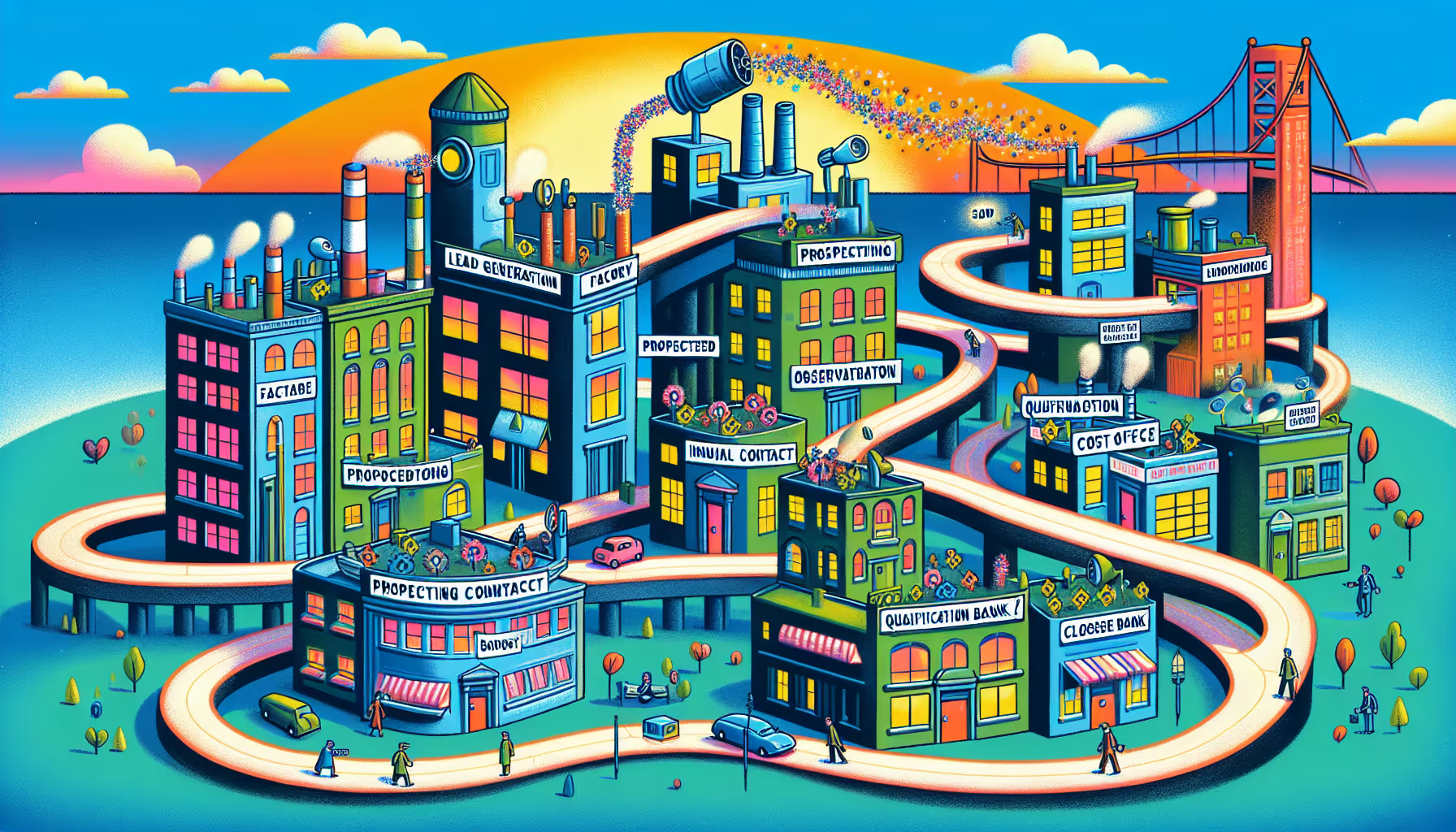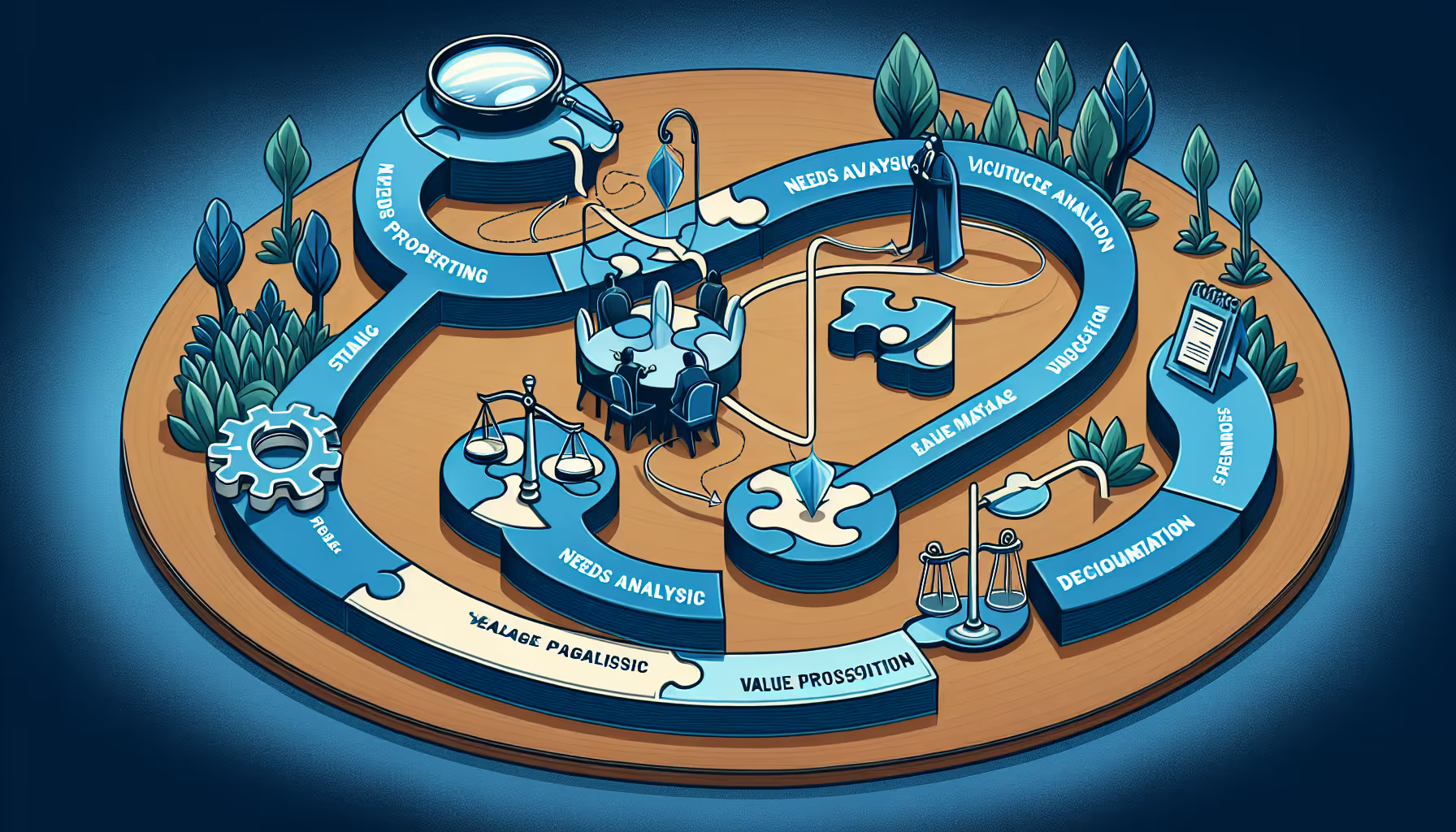HubSpot Pipeline Management: Proven Tactics for Sales
Learn how to define and manage HubSpot pipelines to customize deal stages, track progress, and save time while driving sales success in your CRM.

How do you turn HubSpot pipeline management into a robust framework for sales success?
Cutting through the confusion and mastering HubSpot pipeline management for success can give your sales efforts an edge.
This article is your roadmap to understanding, customizing, and optimizing your sales pipeline within HubSpot, ensuring you can harness its full potential for your business’s growth.
We’ll walk you through the essential steps of pipeline setup, practical automation tips, and the analytical insights necessary to keep your sales engine running smoothly.
Key Takeaways
- HubSpot’s pipeline management tool enhances sales process efficiency through customization, automation, and streamlined deal movement, contributing to greater revenue growth.
- Maintaining a healthy sales pipeline in HubSpot involves regular audits, prioritizing high-value opportunities, and adapting sales strategies to align with key analytics and metrics.
- Advanced HubSpot pipeline management tactics, like creating separate pipelines for different sales processes and integrating workflow tools, provide deeper insights and foster agile management responsive to market and customer changes.
The Essentials of HubSpot Pipeline Management

In the world of sales, a structured approach isn’t just beneficial—it’s essential. With 28% higher revenue growth observed in companies that have a solid sales process, it’s clear that mastering sales pipeline management can lead to significant financial gains. At the heart of this lies the sales pipeline, a visual representation that captures the essence of a prospect’s journey from lead to loyal customer. Implementing effective sales pipelines is crucial for achieving success in this area.
HubSpot, a premier customer relationship management (CRM) platform, offers a robust pipeline management tool that:
- Simplify sales process with HubSpot LinkedIn Integration
- Ensures that every step taken is a stride towards success
- Helps create a well-structured sales pipeline that reflects a unique sales process
- Facilitates effective lead nurturing
- Ultimately leads to a thriving business.
Understanding the Core Components
Diving into the core components of a HubSpot sales pipeline is akin to mapping out a roadmap for success. Each stage in the pipeline represents a crucial milestone in the sales journey, from prospecting and lead qualification to the final handshake of a closed deal. To harness the full power of a sales pipeline and optimize your sales funnel, every stage must be well-defined, with set objectives and strategies that cater to the unique needs of the leads being nurtured.
Customization is key; HubSpot allows the tailoring of Lifecycle Stage properties, ensuring your sales pipeline stages mirror the actual buyer’s journey and eliminate any disconnect between your deal stages and the customer’s needs.
The Mechanics of Deal Movement
Moving a deal through the pipeline is like a well-choreographed dance, each step calculated and precise. In HubSpot, the mechanics of deal movement are underpinned by structured pipeline stages and the associated probabilities of closure—which can and should be refined over time for improved forecasting accuracy.
The beauty of HubSpot’s system is its automation capabilities; deals can glide from one stage to the next with the help of workflow triggers, saving your team precious time and maintaining momentum.
Tailoring Your Sales Pipeline Stages for Maximum Efficiency

A sales pipeline should be a mirror reflection of your unique sales process. Customizing the deal stages within HubSpot is not just a recommendation—it’s a mandate for those seeking maximum efficiency. It’s about ensuring that your sales team members aren’t just going through the motions but are engaging in a sales process that’s as streamlined as it is strategic. Maintaining simplicity while reflecting the specific steps of your sales cycle is paramount to avoid unnecessary complications that can cloud your sales efforts.
Additionally, for businesses managing various types of sales engagements, having separate pipelines for each ensures clarity and organization.
Defining Custom Stages
When it comes to defining custom stages within your HubSpot pipeline, the goal is to create a pathway that aligns perfectly with your prospect’s buying journey. Think of each stage as a chapter in a book, each with its own name, signifying its role and importance in the narrative of your sales process.
HubSpot simplifies this by providing options to add, edit, or even remove stages to maintain relevance and focus within your pipeline, ensuring that your sales process remains agile and responsive to the needs of your deals.
Setting Probabilities and Milestones
Assigning probabilities to deals is not about guesswork but about applying statistical insights to predict the likelihood of a sale. In HubSpot, setting these probabilities can be approached in various ways—be it step-based, where each completed action increases the win probability, or stage-based, where moving to a new stage represents a significant jump in closing likelihood.
For those who prefer a custom touch, HubSpot also offers the flexibility to use custom fields or even manual adjustments based on sales rep judgment, ensuring that your sales forecasting is as accurate as it is adaptable.
Optimizing Deal Tracking with HubSpot Features

HubSpot’s Deals section serves as mission control for your sales operations, centralizing the myriad aspects of deal management into a single, coherent interface. It offers the following benefits:
- Manage different with precision
- Each lifecycle stage has its own pipeline that provides a crystal-clear view of the customer journey
- Enhance control over the process
- Improve performance reporting
With features such as real-time reporting dashboards, sales teams gain the foresight to predict revenue and identify potential sales process obstacles, making deal tracking a proactive rather than reactive task.
Leveraging Automation for Consistency
In the pursuit of sales excellence, consistency is king. HubSpot’s workflows stand as a testament to the power of automation—streamlining business processes and enhancing team efficiency. Whether it’s routing leads, managing follow-ups, or updating deal properties, HubSpot’s CRM automation capabilities are designed to optimize your sales process with HubSpot lead status for continuous improvement.
The visual editor for real-time workflow design ensures that the right contacts are targeted, and CRM data is used to personalize emails, cementing HubSpot as a central pillar in the realm of effective sales pipeline management.
Real-time Reporting for Informed Decisions
In a landscape where timing is everything, real-time reporting is the compass that guides sales teams to make informed and timely decisions. HubSpot’s customizable reporting tools not only integrate data from various sources but also scale to meet complex reporting requirements, making analytics accessible and relevant for specific business needs.
It comes as no surprise that accurate sales forecasting within HubSpot provides the visibility and control necessary for sales leaders to steer their teams towards realistic and achievable goals.
Streamlining Communication and Follow-ups

Communication is the lifeblood of any sales process, and in HubSpot, streamlining it is a priority. By leveraging automated follow-ups and optimizing the timing of emails, HubSpot ensures that your sales efforts are not only consistent but have the highest chance of engaging prospects effectively. The platform’s structured approach to follow-ups aids in disqualifying leads that are no longer interested, keeping the pipeline lean and focused on those that matter.
With personalized email campaigns powered by HubSpot, the chances of conversion increase significantly, bolstering your sales effectiveness.
Automated Reminders and Tasks
Automation within HubSpot extends to the very core of sales engagement. By setting up automated reminders and tasks, sales reps are freed from the burden of manual follow-ups, allowing them to focus on high-impact activities that move the needle. The platform’s ability to initiate workflows based on user actions ensures that follow-up actions are not only timely but also highly relevant, contributing to a disciplined and effective sales strategy.
Personalized Outreach Strategies
Personalization is not just a buzzword; it’s a powerful strategy that HubSpot harnesses to drive sales success. With tools like:
- Conversation Intelligence for call transcription and analysis
- Import LinkedIn contacts to HubSpot
- Log LinkedIn messages to HubSpot
- Use a text expander tool for Chrome to enhance productivity
- Email personalization to tailor messages to individual recipients
- CRM data to track and analyze customer interactions
- Personalized content recommendations to deliver relevant information to prospects and customers
HubSpot provides insights that refine sales tactics and strengthen customer relationships.
Delivering content that resonates with prospects at each pipeline stage is crucial, and HubSpot’s personalized outreach capabilities ensure that your communication is both relevant and impactful, fostering relationships that lead to sales conversions.
Enhancing Team Collaboration within HubSpot

Behind every successful sales pipeline is a collaborative team, and HubSpot’s suite of tools is designed to enhance this aspect of the sales process. By streamlining communication and providing shared access to essential data, HubSpot fosters an environment where sales and marketing team members can work together seamlessly towards common goals.
Role-based Access and Task Delegation
Collaboration within HubSpot is further refined through role-based access and task delegation. By tailoring user permissions, admins can ensure that team members have the appropriate level of access to the CRM tools they need, optimizing team efficiency and maintaining the integrity of the sales process.
Shared Views and Reports
Data-driven decision-making is a hallmark of effective sales teams, and HubSpot’s shared views and reports are the catalysts for this approach. With the ability to easily share reports and tailor dashboard access permissions, teams can ensure that everyone is on the same page, working from a unified set of data that guides sales strategies and forecasting.
Mastering HubSpot's Analytics for Sales Insight
Analytics within HubSpot are not just about numbers; they’re about insights that drive sales performance and inform strategic decisions. The platform’s intuitive reporting engine allows team members at all levels to draw valuable insights without needing specialized data analysis skills, empowering sales professionals to make data-backed decisions that spur revenue growth.
Key Metrics to Monitor
To master the analytics of HubSpot, one must keep a vigilant eye on key metrics that signify the health of the sales pipeline. From the average deal size to conversion rates, these metrics provide a baseline overview that informs best practices and strategic adjustments.
Interpreting Data for Strategy Refinement
But monitoring metrics is just the beginning; interpreting the data to refine sales strategies is where the true mastery lies. By analyzing pipeline velocity and leveraging historical data, sales teams can make informed adjustments that enhance sales effectiveness and align with long-term goals.
Best Practices for Maintaining a Healthy Pipeline
A healthy sales pipeline is the heartbeat of any sales organization, and maintaining it requires a disciplined approach. Regular pipeline reviews, combined with strategic management practices led by a sales manager, ensure that your pipeline remains an accurate reflection of your sales potential, free from the clutter of stale deals.
Regular Pipeline Audits
Conducting regular pipeline audits in HubSpot is like spring cleaning for your sales process—it’s about maintaining clarity and efficiency. These audits are essential to identify and eliminate blockages, ensuring that only the most promising prospects are focused on, which in turn maintains a clean and high-performing pipeline.
Prioritizing High-value Opportunities
In the quest for sales growth, prioritizing high-value opportunities is a strategic imperative. It’s about focusing your sales efforts on leads that are more likely to convert and represent a higher lifetime value. By targeting efforts on prospects that share characteristics with your most successful opportunities, you increase the likelihood of adding high-value sales to your pipeline.
Advanced HubSpot Pipeline Management Tactics
Advanced HubSpot pipeline management tactics go beyond the basics, offering sophisticated strategies for sales teams that seek to outpace the competition. Creating separate pipelines for different sales processes, customizing deal cards, and having a comprehensive overview of CRM objects are just a few examples of how HubSpot can be leveraged for deeper sales insights and management.
Custom Filters and Views
Custom filters and views in HubSpot are akin to a magnifying glass, allowing sales teams to zoom in on specific aspects of their pipeline and monitor the metrics that matter most. Whether it’s tracking unique deal characteristics or analyzing pipeline health, HubSpot’s custom reporting capabilities ensure that sales strategies are fueled by detailed and actionable insights.
Workflow Integrations
Workflow integrations in HubSpot are about creating a seamless ecosystem where all your tools and processes work in harmony. By integrating platforms like Teamwork, sales and marketing teams can manage their tasks and projects without ever leaving HubSpot, ensuring that all activities are aligned with the sales pipeline’s needs.
Adapting to Changes with Agile Pipeline Management
Agile pipeline management is the embodiment of adaptability in sales. It underscores the importance of being flexible and responsive to market changes, customer needs, and internal strategic shifts.
With HubSpot, sales teams are equipped to monitor their pipeline continuously and make the necessary adjustments swiftly, ensuring that their sales strategies remain relevant and effective.
Scenario Planning
Scenario planning in HubSpot is about being prepared for the future, whatever it may hold. It enables sales teams to consider a range of potential outcomes and factors, such as market trends and customer behavior, to set and work towards long-term sales goals.
This approach ensures that teams are not caught off-guard by changes but are ready to adapt their strategies proactively.
Dynamic Adjustments and Updates
In the realm of sales, change is the only constant, and dynamic adjustments and updates are integral to maintaining an effective sales pipeline. HubSpot’s strategic planning tools empower sales teams to make swift changes to their sales strategies, ensuring that they stay aligned with evolving business objectives and market conditions.
Frequently Asked Questions
How does agile pipeline management benefit sales teams using HubSpot?
Agile pipeline management with HubSpot enables sales teams to adapt quickly to market changes and internal strategy shifts, ensuring their strategies remain relevant and effective.
What are some advanced HubSpot pipeline management tactics?
To effectively manage your HubSpot pipeline, consider creating distinct pipelines for different sales processes, customizing deal cards, and using custom filters and views. This will help you analyze your pipeline in detail and optimize your sales strategies.
Why is it important to have separate pipelines for different sales processes?
It is important to have separate pipelines for different sales processes because it provides a clearer view of the customer journey for each process and allows for a more organized and efficient sales strategy. This can lead to better understanding of customer needs and improved sales performance.
How can I customize my sales pipeline stages in HubSpot?
To customize your sales pipeline stages in HubSpot, you can use the 'Add Stage' button to create new stages, edit stage names, and remove stages that are no longer relevant to your sales process. This allows you to tailor your pipeline to your unique sales cycle and customer journey.
What are the core components of a HubSpot sales pipeline?
The core components of a HubSpot sales pipeline are the deal stages representing a lead's journey, such as prospecting, lead qualification, and conversion, each with defined objectives and tailored strategies.

